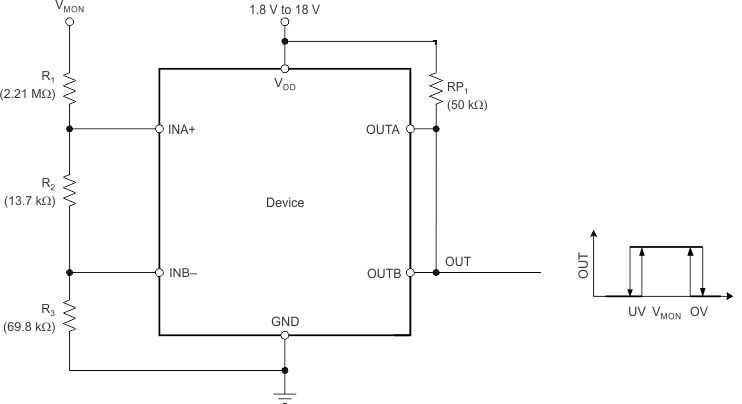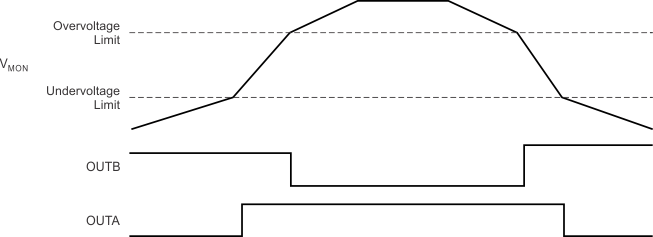SNVSAV2B January 2018 – November 2019 TLV6700
PRODUCTION DATA.
- 1 Features
- 2 Applications
- 3 Description
- 4 Revision History
- 5 Device Comparison Table
- 6 Pin Configuration and Functions
- 7 Specifications
- 8 Detailed Description
- 9 Application and Implementation
- 10Power Supply Recommendations
- 11Layout
- 12Device and Documentation Support
- 13Mechanical, Packaging, and Orderable Information
Package Options
Mechanical Data (Package|Pins)
Thermal pad, mechanical data (Package|Pins)
Orderable Information
8.3.3 Window Comparator
The inverting and noninverting configuration of the comparators forms a window-comparator detection circuit using a resistor divider network, as illustrated in Figure 14 and Figure 15. The input terminals can monitor any system voltage above 400 mV with the use of a resistor divider network. The INA+ and INB– terminals monitor for undervoltage and overvoltage conditions, respectively.
 Figure 14. Window Comparator Block Diagram
Figure 14. Window Comparator Block Diagram  Figure 15. Window Comparator Timing Diagram
Figure 15. Window Comparator Timing Diagram